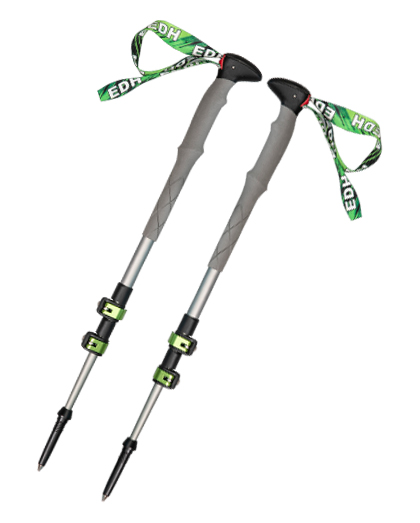

Ski poles, also called poles, are essential equipment on any ski trip. Skiers use ski poles for propulsion and balance, but they're also used for hand support and picking up skis. Modern ski poles are usually made of graphite and aluminum, although materials like bamboo are also used sometimes. Most poles are used in freestyle skiing, alpine skiing, and figure skating.
The ski pole is basically a piece of wood with a length of flexible rope attached to it at the end. The rope is pulled through loops on the ski pole, much like a bicycle chain is fixed to a bicycle. This creates a tension in the ski pole that keeps it rigid so it can hold the skis. The amount of tension that a ski pole has will depend on the type of ski, the weight of the skier, how deep the snow is, the ski's width, and the manufacturer's specifications.
Most modern ski poles have a thumb hook at the end, which allows the skier to grasp the end tightly and hold onto the pole securely. Before ski poles were invented, a ski stick was used to grip the bottom of the ski, helping the skier to control his or her movements. Sticky grips weren't nearly as comfortable as today's ski poles. Some sticks could slip off completely if they weren't held tightly. Today's ski stick models are very snugger than the ones that came before.
Because they're worn around the waist, ski sticks are almost always made of leather. Today's models are available in various colors and patterns, and come in all kinds of sizes. They're usually reinforced with Kevlar to make them more durable and wear longer. Leather ski sticks can be dyed any color, though darker shades look better for the skier. Some sticks may also include metal, plastic, or fiberglass, which can add grips and make them more attractive. In addition, some leather ski poles feature tiny studs along their length to secure them in a position to prevent slipping.
Ski sticks are a very important part of skiing because they enable the skier to control his or her movements. Without the ability to move his or her arms independently, skiing wouldn't be possible. This is especially true if the skier has arthritis, limited mobility, or is unable to walk. Without the ability to ski effectively, the confidence level plummets, which can result in poor performance and, of course, accidents. To help prevent accidents and improve performance, it's a good idea to invest in a quality ski pole.
There are many different kinds of ski poles. Some are sold as individual pieces, while others come as part of a pair of skis. Many brands and designers make ski poles with interchangeable tips and cables, which allow a skier to swap out parts if he or she feels like a change is needed. This is especially beneficial for those who don't have the same set of skis year-round. It's not uncommon to see a skier borrow or rent several ski poles over the season.
Another thing that makes ski sticks useful is the fact that most ski stick manufacturers offer replacement tips and cables. This is a great way to save money, as well as ensuring that your ski equipment is functioning properly. Some ski pole companies even offer warranties on their ski sticks.
There are a variety of different materials when it comes to making ski sticks. The least expensive types are made of acrylic, but there are also versions that are made out of carbon and Kevlar. The most expensive kind are typically made out of titanium. The type you choose will depend on the amount of money you're willing to spend. If you're only going to use the ski stick a few times a year, you might want to go with a cheaper version. However, if you plan on taking your ski equipment to competitions and other places, you may want to invest in a top quality ski stick so that you can be sure that it will be effective and last as long as you need it to.
